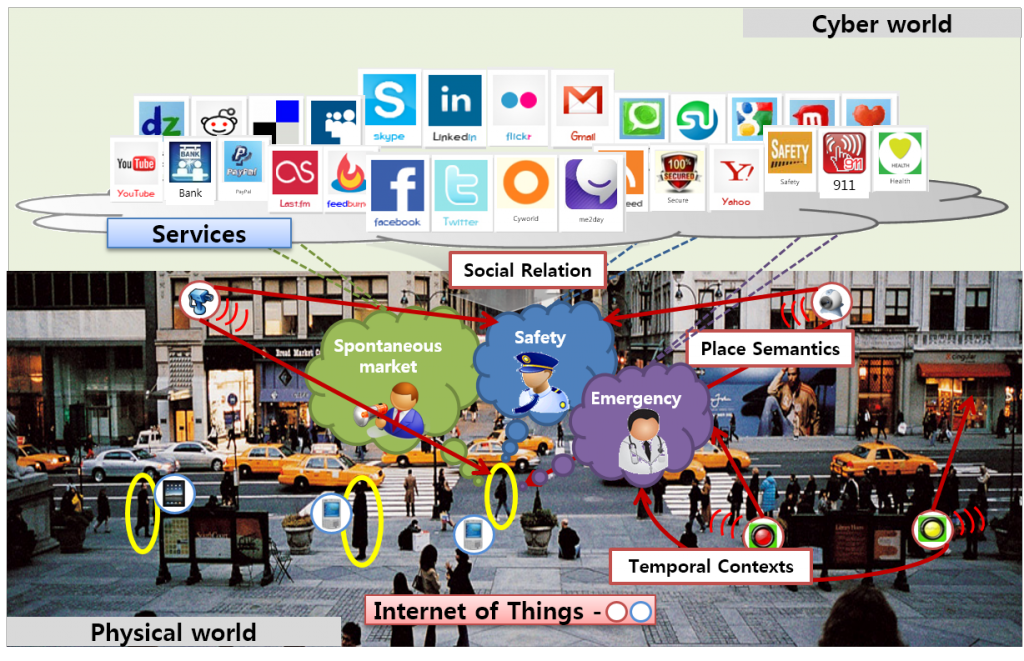Research
2016년 2월 4일
leave a comment
By admin
Ad-hoc Crowd Computing
Nowadays, the increasing popularity of smart devices – such as smartphones and tablets – is changing our daily life. Two noteworthy changes are: the increment of mobile traffic, due to unlimited connectivity of smart devices using diverse wireless network technologies; and the popularization of social network service (SNS) – also called social media – which results in the creation of social games, social commerce applications, among others. In these new environments, smart devices are a valuable tool to help users to achieve their goals. Since they are omnipresent, they can learn from users’ action and understand their intentions and provide proper services to support these actions.
Spontaneous Service Provision Framework

Future environments combined with “cyber world” and “physical things”
We define Active Surroundings as a pervasive environment where entities (devices or services) actively response to user actions or help users to perform their jobs without intrusion to the users. An active surrounding is inherently composed of heterogeneous devices. Our middleware infrastructure for Active Surroundings aims to support community-centered pervasive environment where system minimizes user distraction or does not intrude users in the environment. The middleware infrastructure is composed of five components such as environment sensing, context management, dynamic adaptive framework, adaptive service discovery, and dynamic adaptive network, to enable users to be free from intrusion by system or devices. Services need to be reconfigured in ubiquitous computing environments because what a person wants and the resources required to accomplish this changes dynamically. A person’s needs change all the time, and not only do people move around a great number of places in their daily lives, but even the environment in a single place can change greatly in a short amount of time. Service reconfiguration considers these changes and provides users with high-quality service by composing the diverse computing services that change dynamically.
Urban Computing Research Center: http://ucrc.kaist.ac.kr/
Application-Aware Networking for Smart Edges

Spontaneous interaction networking/application-aware networking refers to the application of high-level contexts – such as application and user requirements – to manage wireless ad-hoc networks created among users’ smart devices, making it a key technology to enable wireless ad-hoc crowd computing. Since networks created using this technology consider different users’ and applications’ requirements, they are optimized for what users want to do, enhancing the resource usage on mobile devices. To enable this technology, we are working on instance-based networking and interference-aware multi-radio networking. Instance-based networking manages multiple network instances for providing the optimal network capability for different users and applications. Interference-aware multi-radio networking provides higher throughput and stable network by avoiding collisions through and analysis on interference.